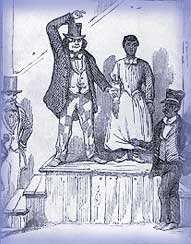Chloe Cooley was a young black woman who was enslaved in Upper Canada during the late 1700s. She was enslaved by a white farmer named William Vrooman, a loyalist who had fled to Canada after the American Revolution. In 1793, Lieutenant Governor John Graves Simcoe put forth a complicated piece of legislation.
Simcoe didn’t want to upset Canadians by freeing all the people enslaved but he did want to work slowly towards abolition. His legislation made it illegal for anyone coming into the country to enslave others and ruled that anyone currently enslaved, born to a mother who was enslaved would be freed at the age of 25.
Vrooman feared that he would have to set Cooley free one day. Instead, on March 14, 1793 he sold her against her will across the river to America where slavery was still legal. While the anti-slavery bill was still being debated, Cooley was beaten, tied up and forced into a small boat. Vrooman rowed her across the Niagara River despite her screams. After she was sold, she was never seen again.
A free black man named Peter Martin witnessed the incident. He brought William Grisely, a white man who had also witnessed the abduction to report it to the Executive Council governing the area. Though many members, including Simcoe, were reportedly shocked at the treatment of Cooley, her abduction took place in the early evening.
None of the white men “appalled” with the incident had heeded her screams for help or attempted to stop her or Vrooman. His actions were entirely legal in Canada where people who were enslaved were considered “property”.
The Chloe Cooley incident is just one example of the endless instances of violence experienced by women and men who were enslaved in Canada. It is now credited with being a driving force behind the enactment of Canada’s first and only anti-slavery legislation the Slave Act of 1793. Slavery would continue to be legal until it was abolished by the British Empire in 1830.



